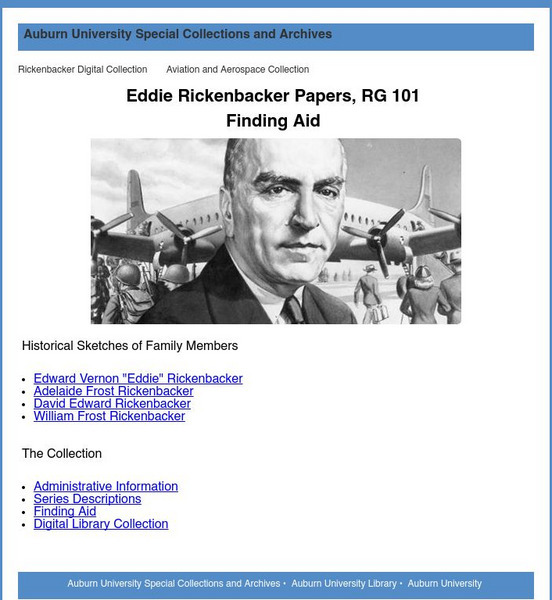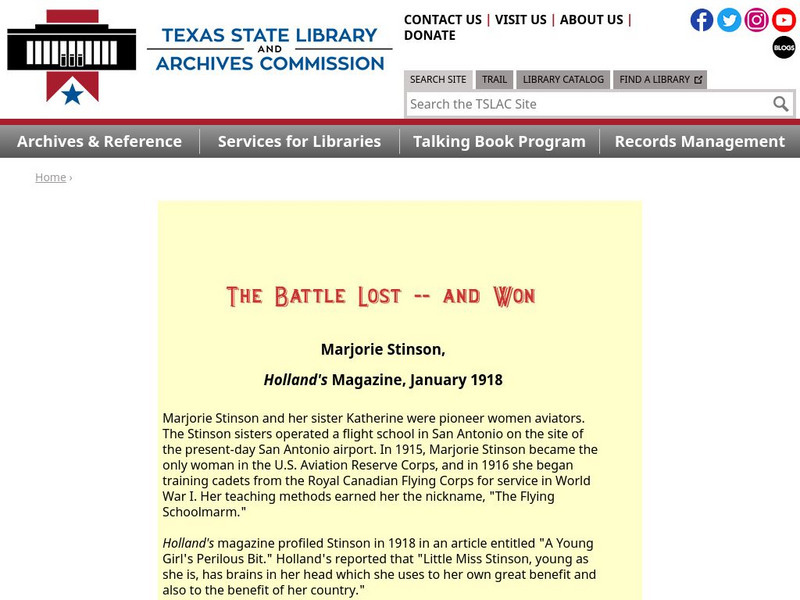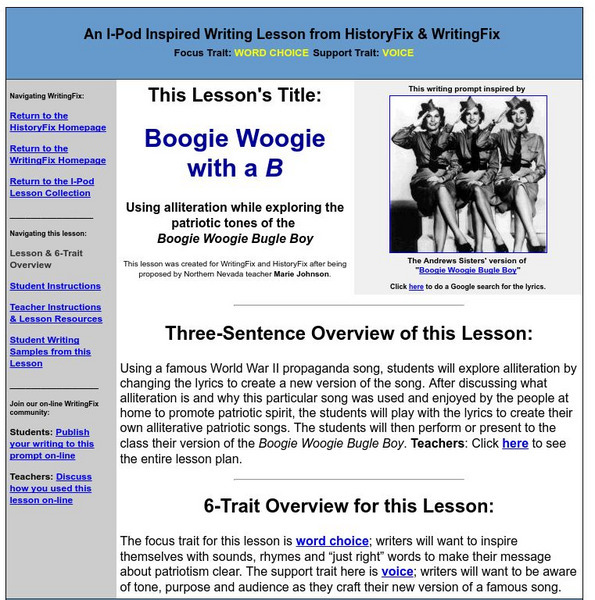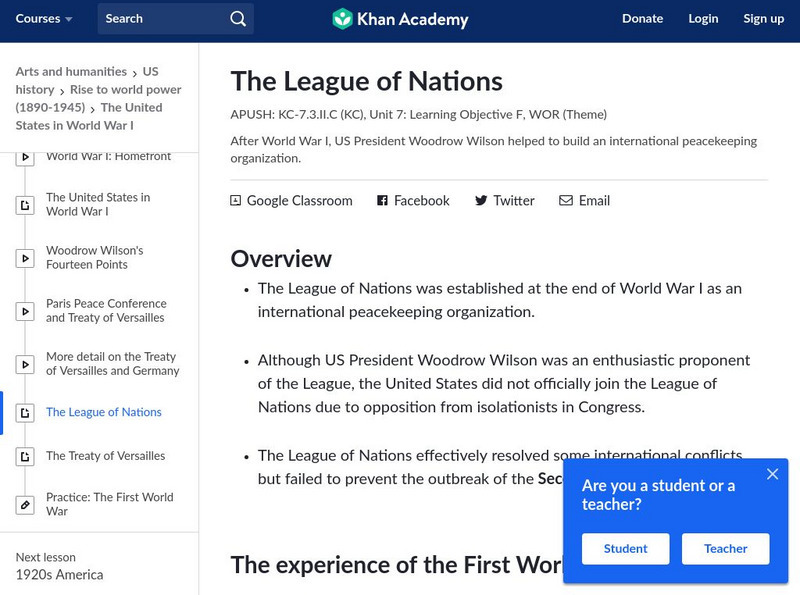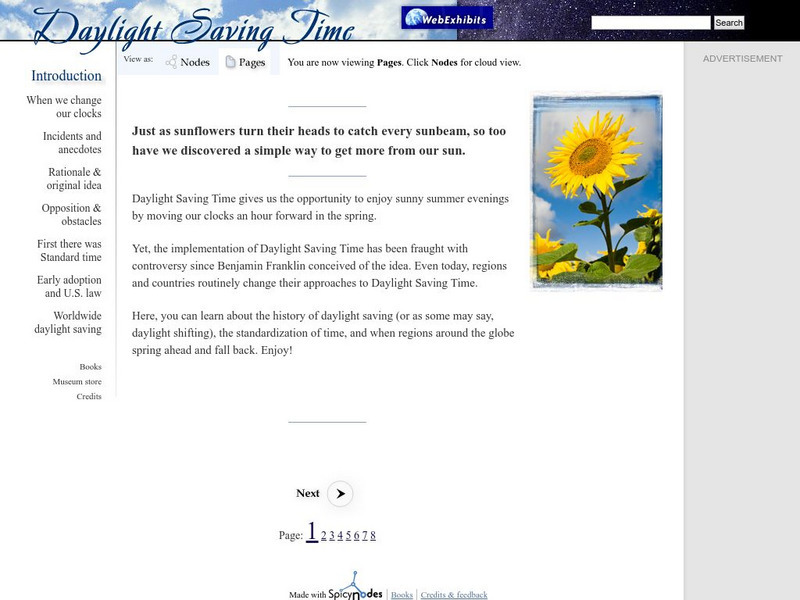Hi, what do you want to do?
University of Groningen
American History: Outlines: The War in North Africa and Europe
Overview of the course of World War II in North Africa and Europe.
Library of Congress
Loc: Teachers: Photos From Great Depression: Jacob Have I Loved
A collection of images from the period of the Great Depression to World War II provide students with visual references as they read and examine Katherine Paterson's novel, "Jacob Have I Loved." Lesson encourages critical thinking about...
Other
Kentucky Historical Society: Kentucky Military Treasures
A collection of personal stories, illustrated with artifacts, documents, and photographs, that exemplifies the military experiences of Kentuckians in America's wars, beginning with the War of 1812. Requires Adobe Flash.
Veterans Affairs Canada
Veterans Affairs Canada: A Day of Remembrance
This resource explains the reasons for a day dedicated to recalling the sacrifices of Canada's soldiers. Direct web links take students to pages that explain in concise language "Why Remember", "Whom Do We Remember", "What Should We...
Auburn University
Auburn University Archives: Rickenbacker Papers
"Historical Sketch of Eddie Rickenbacker." Includes information on his childhood, his involvement in WWI and WWII, and his life at home. Also includes webpages on his family.
Other
Choctaw Nation of Oklahoma
Learn about the history of the first Native American code talkers from the Choctaw Nation. Includes profiles of those who worked with the United States government during World War I and World War II.
Ducksters
Ducksters: Poland History and Timeline Overview
Kids learn about the history and timeline of the country of Poland including early tribes, the Polish Empire, World War I and II, Solidarity movement, and independence from the Soviet Union on this site.
Texas State Library and Archives Commission
Texas State Library and Archives Commission: The Battle Lost and Won: Margorie Stinson, Holland's Magazine, Jan 1918
Learn about Marjorie and Katherine Stinson, "pioneer women aviators," who helped train men for the Canadian Royal Flying Squadron during World War I. Also included is a brief explanation of the Women's Airforce Service Pilots' role...
World War 1
Worldwar1.com: Trenches on the Web: July 1914: The July Crisis: The Month of the Plotters
A timeline of the events that followed the assassination of Archduke Ferdinand and led up to the outbreak of World War I.
PBS
Pbs the Great War: Kaiser Wilhelm Ii Crippled Bombast
Historian Robert K. Massie explores how Kaiser Wilhelm II's crippled arm shaped his personality and even the war.
World War 1
Worldwar1.com: Great War Society: Doughboy Center: Forgotten Victory: Part Ii
This site is a sequel to Part I. It also contains excellent information about the end of the battle for Blanc Mont Rouge and where the Marines directed their attention from there.
PBS
Pbs the Great War: Kaiser Wilhelm a Mystery
Historian Jay Winter discusses the life of Kaiser Wilhelm and questions his ultimate responsibility as the architect for World War I.
Smithsonian Institution
National Postal Museum: Art of the Stamp: General Douglas Mac Arthur
View the artwork for a U.S. postage stamp issued in 1971 to commemorate General Douglas MacArthur. With a short passage on his heroism and bold decisions in both World Wars I and II.
Library of Congress
Loc: On the Homefront
This site from the Library of Congress provides posters and information on the home front during World War II and World War I. What were the people at home doing to help the men and women in the armed forces? See posters on Volunteer...
Independence Hall Association
U.s. History: The Treaty of Versailles and the League of Nations
President Wilson lobbied for a "just peace" for the end of World War I. Read about his Fourteen Points that he thought would accomplish this. See how his plans for a League of Nations and the final terms of the Treaty of Versailles...
Writing Fix
Writing Fix: An I Pod Inspired Writing Lesson: Boogie Woogie With a B
Using a famous World War II propaganda song, students will explore alliteration by changing the lyrics to create a new version of the song. After discussing what alliteration is and why this particular song was used and enjoyed by the...
University of Groningen
American History: Outlines: Japan, Pearl Harbor and War
Overview of Japanese expansion in the Pacific, attack on Pearl Harbor and U.S. entry into World War II.
Ducksters
Ducksters: Biography for Kids: Kaiser Wilhelm Ii
On this site, learn about the biography of Kaiser Wilhelm II, the last emperor of Germany who contributed to starting World War I and eventually lost the war.
Library of Congress
Loc: African American Odyssey: Harlem Renaissance and the Flowering of Creativity
A description of the African-American literary and musical boom known as the Harlem Renaissance after World War I and before World War II. Profiles some of the prominent figures involved in the movement.
Sam Houston State University
Shsu: Late Imperial Period: Russia: A Country Study
This site evaluates the transformation of Russia in the nineteenth century. It discusses the economic developments, the reforms, foreign affairs, and the rise of the revolutionary movement. From the book, Russia: A Country Study, edited...
Khan Academy
Khan Academy: Ap Us History: 1890 1945: The Us in Wwi: The League of Nations
Discusses the background to establishing the League of Nations, its role in facilitating peace negotiations, and why it ultimately failed to prevent World War II. Explains why the United States never joined it and how the United Nations...
Other
Defense: American Indian Heritage Month: Code Talkers
Find out about the Native Americans who used their tribal languages as code during World War I and World War II. Includes information on Charles Chibitty, a Comanche code talker who was inducted into the Pentagon's Hall of Heroes.
Institute for Dynamic Educational Advancement
Web Exhibits: Daylight Saving Time
Why in the world do we turn our clocks forward in the Spring and back again in the Fall? Share with your students the rationale and history of the Daylight Saving Time concept from Benjamin Franklin through World War I and World War II...
Annenberg Foundation
Annenberg Learner: American Passages: Modernist Portraits
This unit delves into American modernist literature which introduced itself between World War I and World War II, including authors Ernest Hemingway, Gertrude Stein and F. Scott Fitzgerald. Explore the site for a video on demand,...









